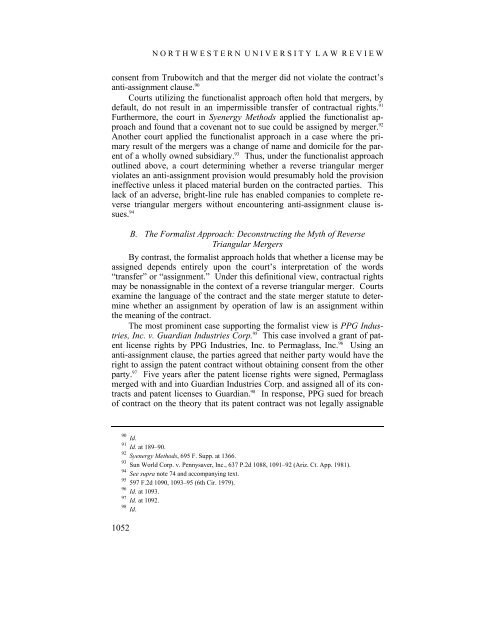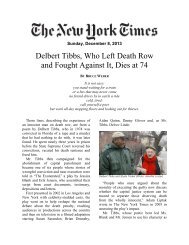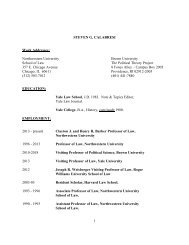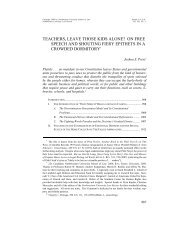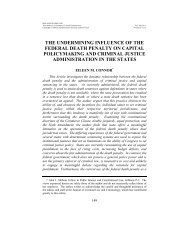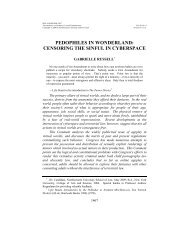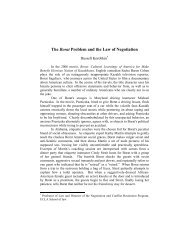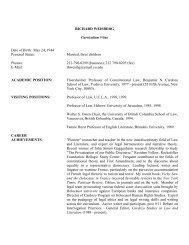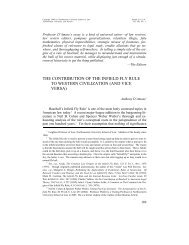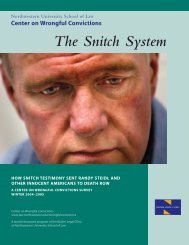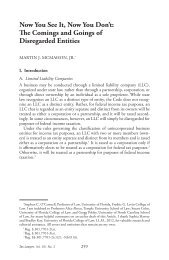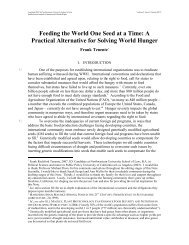The Reverse Triangular Merger Loophole and Enforcing Anti
The Reverse Triangular Merger Loophole and Enforcing Anti
The Reverse Triangular Merger Loophole and Enforcing Anti
You also want an ePaper? Increase the reach of your titles
YUMPU automatically turns print PDFs into web optimized ePapers that Google loves.
1052<br />
N O R T H W E S T E R N U N I V E R S I T Y L A W R E V I E W<br />
consent from Trubowitch <strong>and</strong> that the merger did not violate the contract’s<br />
anti-assignment clause. 90<br />
Courts utilizing the functionalist approach often hold that mergers, by<br />
default, do not result in an impermissible transfer of contractual rights. 91<br />
Furthermore, the court in Syenergy Methods applied the functionalist approach<br />
<strong>and</strong> found that a covenant not to sue could be assigned by merger. 92<br />
Another court applied the functionalist approach in a case where the primary<br />
result of the mergers was a change of name <strong>and</strong> domicile for the parent<br />
of a wholly owned subsidiary. 93 Thus, under the functionalist approach<br />
outlined above, a court determining whether a reverse triangular merger<br />
violates an anti-assignment provision would presumably hold the provision<br />
ineffective unless it placed material burden on the contracted parties. This<br />
lack of an adverse, bright-line rule has enabled companies to complete reverse<br />
triangular mergers without encountering anti-assignment clause issues.<br />
94<br />
B. <strong>The</strong> Formalist Approach: Deconstructing the Myth of <strong>Reverse</strong><br />
<strong>Triangular</strong> <strong>Merger</strong>s<br />
By contrast, the formalist approach holds that whether a license may be<br />
assigned depends entirely upon the court’s interpretation of the words<br />
“transfer” or “assignment.” Under this definitional view, contractual rights<br />
may be nonassignable in the context of a reverse triangular merger. Courts<br />
examine the language of the contract <strong>and</strong> the state merger statute to determine<br />
whether an assignment by operation of law is an assignment within<br />
the meaning of the contract.<br />
<strong>The</strong> most prominent case supporting the formalist view is PPG Industries,<br />
Inc. v. Guardian Industries Corp. 95 This case involved a grant of patent<br />
license rights by PPG Industries, Inc. to Permaglass, Inc. 96 Using an<br />
anti-assignment clause, the parties agreed that neither party would have the<br />
right to assign the patent contract without obtaining consent from the other<br />
party. 97 Five years after the patent license rights were signed, Permaglass<br />
merged with <strong>and</strong> into Guardian Industries Corp. <strong>and</strong> assigned all of its contracts<br />
<strong>and</strong> patent licenses to Guardian. 98 In response, PPG sued for breach<br />
of contract on the theory that its patent contract was not legally assignable<br />
90 Id.<br />
91 Id. at 189–90.<br />
92 Syenergy Methods, 695 F. Supp. at 1366.<br />
93 Sun World Corp. v. Pennysaver, Inc., 637 P.2d 1088, 1091–92 (Ariz. Ct. App. 1981).<br />
94 See supra note 74 <strong>and</strong> accompanying text.<br />
95 597 F.2d 1090, 1093–95 (6th Cir. 1979).<br />
96 Id. at 1093.<br />
97 Id. at 1092.<br />
98 Id.


